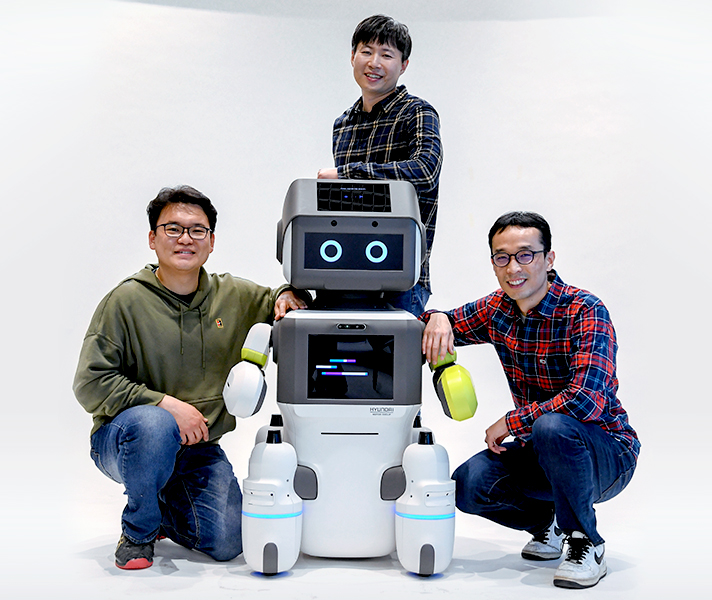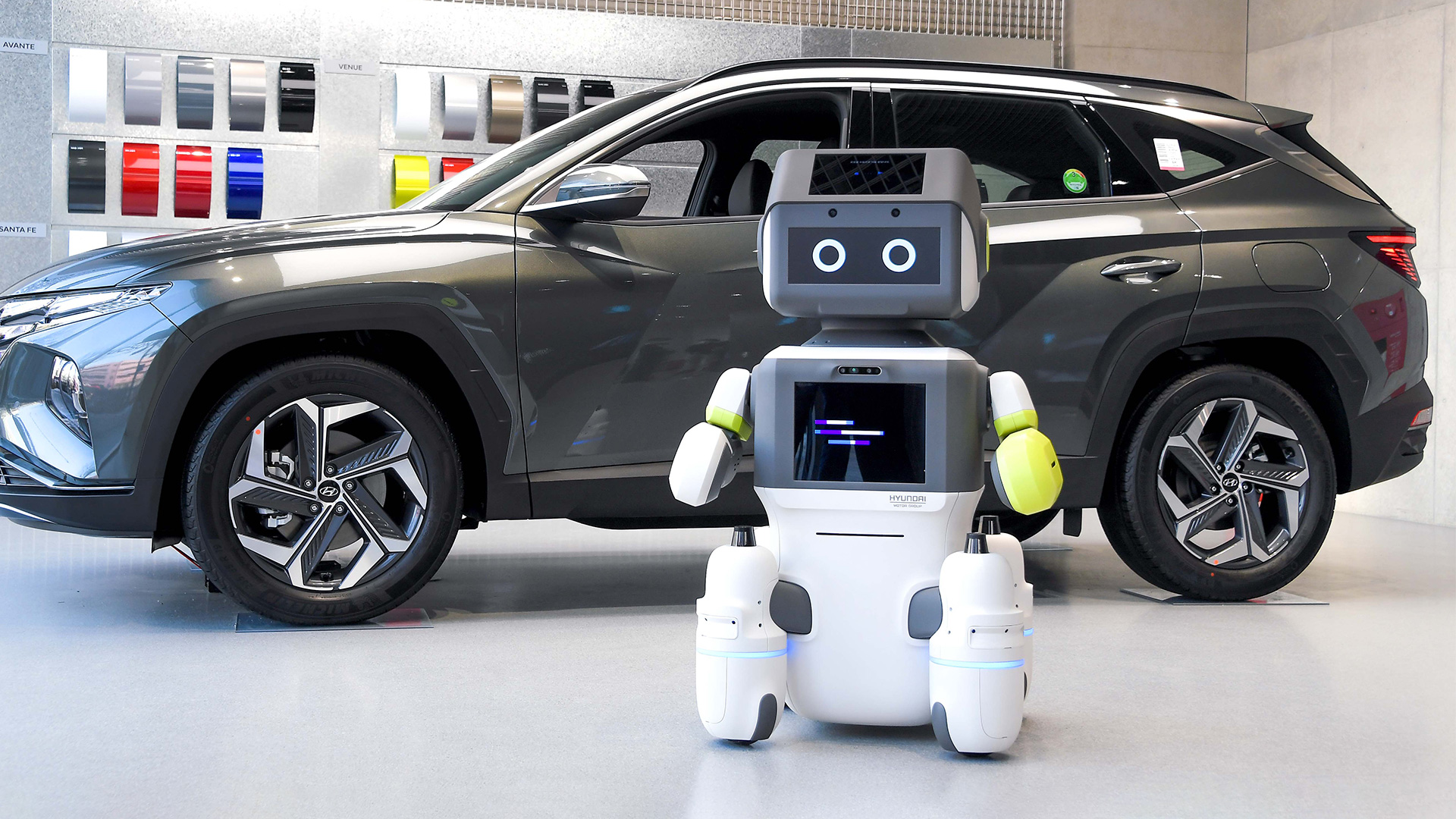Service robot ‘DAL-e’, featured in the car showroom, meets the robotics technology of Hyundai Motor for the Progress of Humanity
‘DAL-e’, a service robot developed by Robotics LAB of the Hyundai Motor Group, has made its appearance in the Hyundai Songpa-daero car dealership.
As the first service robot from Hyundai Motors, DAL-e has been deployed in the showroom of Hyundai Songpa-daero dealership since this month to greet customers and introduce the displayed cars. Service robots like DAL-e are capable of 24-hour operation without time constraints, making it possible to provide customers with consistent service and allowing effective delivery of the brand message among other advantages.
In addition, the robot provides the needs of niche customers preferring non-contact service, while also enjoying the benefit of freedom from social concerns amidst COVID-19.
The story behind the creation of ‘DAL-e’
DAL-e is a service robot developed exclusively by Hyundai Motor Group that maximizes customer experience in the exhibition hall by applying advanced technologies such as artificial intelligence, voice recognition, and autonomous driving. Here are the researchers of the Robotics Lab of Hyundai Motor Group who participated in the development of DAL-e and the story behind the birth of DAL-e.
Q. What kind of research is being conducted at Robotics Lab?
Robotics Lab researches various technologies that will lead the robotics industry based on Hyundai Motor Group's philosophy of ‘Progress for Humanity’. We are developing electric vehicle-charging robots, service robots, etc., starting with wearable robots CEX, VEX, and MEX that provide physical assistance to humans, all for the sustainable development of future robots.
Q. How was DAL-e developed?
In order to develop the DAL-e, the researchers first went to car dealerships to investigate the needs of car masters and customers. As a result of the survey, customers were hoping for a non-face-to-face robot service that would allow them to casually visit the automobile exhibition hall, and car masters expected the robot to share some tasks. As a result, DAL-e is designed so that anyone can conveniently use it by applying a natural language dialogue system and autonomous driving technology. It took about two and a half years from development to completion.

Senior researcher JiYong Jin(left), team manager lL-Yong Yoon, and department manager SiHyun Joo(right) at Hyundai Motor Group's Robotics Lab, participated in the development
Q. What was the most difficult part of the development process?
We had to develop our own hardware modules and software and organically integrate them, and choosing the right communication system between the modules was the most difficult part. Since there are not many companies that have started developing service robots, we had to start from scratch. Also, considering that the content provided by DAL-e needs to be updated from time to time, the Graphic User Interface (GUI) and the Voice User Interface (VUI) had to be content-oriented with a flexible structure. In software design, it was difficult to design various channels such as remote controller or applications for controlling the robot.
Q. How much is DAL-e's autonomous driving technology advanced so far?
We believe that DAL-e should not only move safely around customers but also demonstrate a certain level of gestures and movement that fit the philosophy of our brand - Hyundai and Kia. Researchers have put a lot of effort into implementing DAL-e's unique motion features, and are still improving them. The technology used in autonomous vehicles was applied to the DAL-e. Self-driving cars recognize and analyze the driving environment to drive themselves, while DAL-e makes its own way to measure the space indoors with Lidars and camera sensors. For reference, the Lidar is mounted on the top of two body parts that look like legs when viewed from the front.
Q. Is DAL-e at other exhibition halls overseas as well?
The software of DAL-e is designed with a structure that is easily compatible with various languages. Based on the results of the pilot operation, we think DAL-e will be able to play an active part in overseas exhibition halls. Of course, research on customer response scenarios and gestures suitable for the country would be essential.
Q. From the researchers' perspective, what is the best part of DAL-e?
DAL-e is a service robot specialized in spatial recognition, image processing, and natural language use, and it creates a smoother communication environment between customers and employees. It can be compared to the role of an intern employee. It also presents new entertainment experiences to customers, such as taking pictures. In the future, we hope that some customers will visit the store just to see DAL-e.
Q. In the future, which industries can utilize service robots such as DAL-e?
The popularization of service robots is currently ongoing. It is still too early to apply it to various places and situations. Just like we did with DAL-e, it is necessary to develop customized service features for specific areas. Researchers at the Robotics Lab of Hyundai Motor Group are constantly exploring to expand the application of service robots, and we are seeking opportunities to utilize them in specific business areas such as logistics and security. If we continue to develop robot-related artificial intelligence technologies, hardware, and software platforms, we will soon be able to meet robots in various areas of our daily lives.
KEYWORD

